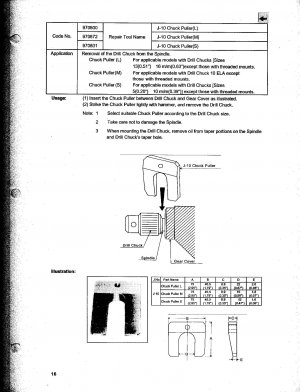- Joined
- Sep 22, 2010
- Messages
- 898
Use the force, Tony, Use the force.
It is amazing how well a 1/2" impact wrench does at removing chucks that resist all other means of removal.
Use a straight 1/2" hex rod and a 1/2" impact socket, or what I use is a hex socket straight onto the impact and whizz, off she comes.
The use of an allen wrench chucked up and whacked with a hammer is fine if the chuck is not "impacted on" from years of use and abuse.
Most of those keyless shucks do not have rebuild kits for them.
Walter
It is amazing how well a 1/2" impact wrench does at removing chucks that resist all other means of removal.
Use a straight 1/2" hex rod and a 1/2" impact socket, or what I use is a hex socket straight onto the impact and whizz, off she comes.
The use of an allen wrench chucked up and whacked with a hammer is fine if the chuck is not "impacted on" from years of use and abuse.
Most of those keyless shucks do not have rebuild kits for them.
Walter


